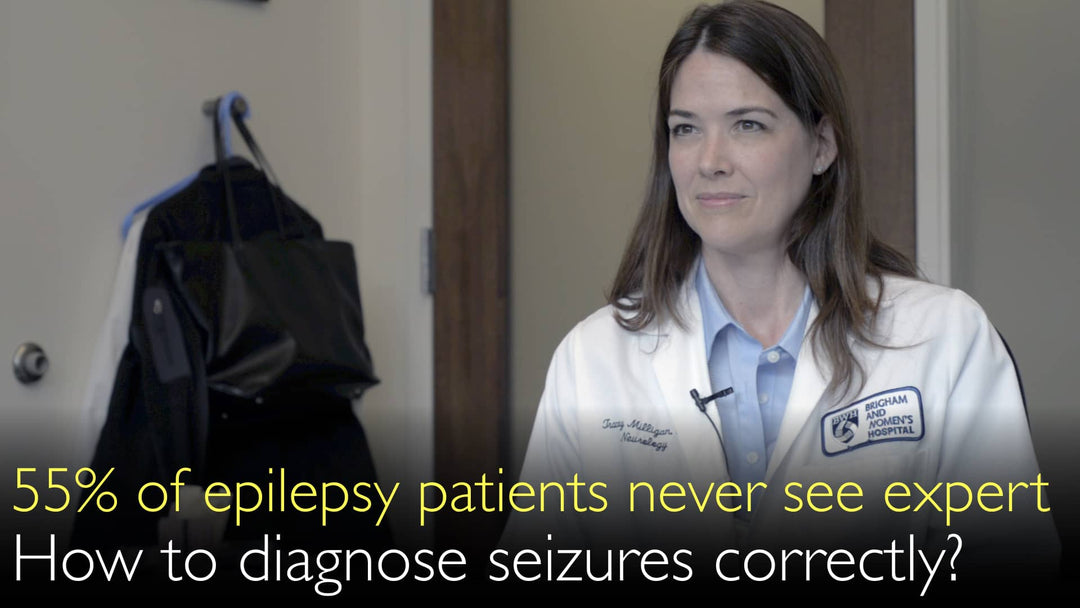Leading expert in bleeding disorders and chronic liver disease, Dr. Pier Mannucci, MD, explains how to correctly interpret coagulation tests. He clarifies that abnormal prothrombin time does not predict bleeding risk in liver patients. Dr. Mannucci details the rebalancing of coagulation and anticoagulant proteins. Portal hypertension is the primary cause of bleeding, not coagulation defects. Coagulation tests are useful for assessing liver function severity and prognosis.
Coagulation Testing and Bleeding Risk in Chronic Liver Disease
Jump To Section
- Coagulation Tests and Bleeding Risk
- Rebalanced Hemostasis in Liver Disease
- True Cause of GI Bleeding
- Clinical Use of Coagulation Tests
- Prognostic Value and Treatment Implications
- Full Transcript
Coagulation Tests and Bleeding Risk
Dr. Pier Mannucci, MD, addresses a common misconception in chronic liver disease management. Patients with end-stage liver disease do experience bleeding, particularly from esophageal varices. However, Dr. Pier Mannucci, MD, emphasizes that abnormal coagulation tests, like a prolonged prothrombin time, are poor predictors of this bleeding tendency. The interview with Dr. Anton Titov, MD, explores why these standard laboratory tests are not straightforward indicators of hemorrhage risk.
Rebalanced Hemostasis in Liver Disease
Dr. Pier Mannucci, MD, explains the complex physiology behind coagulation in liver patients. The liver produces both pro-coagulant factors and natural anticoagulant proteins like antithrombin, protein C, and protein S. In chronic liver disease, production of all these proteins decreases. This creates a new, lower-level balance in the coagulation system. Dr. Pier Mannucci, MD, states this rebalancing means patients do not bleed simply because of an abnormal prothrombin time result.
True Cause of GI Bleeding
The primary driver of bleeding in chronic liver disease is portal hypertension, not a coagulation defect. Dr. Pier Mannucci, MD, clarifies that gastrointestinal bleeding occurs due to the physical stress on vessels like varices in the stomach and duodenum. Correcting abnormal coagulation tests with products like fresh frozen plasma does not effectively prevent this type of bleeding. Dr. Anton Titov, MD, and Dr. Mannucci discuss how treatment must focus on the root cause.
Effective prevention strategies target portal hypertension directly. These measures include using beta-blockers to reduce pressure or performing variceal ligation procedures. This approach is clinically more valuable than attempting to normalize laboratory values that do not correlate with bleeding risk.
Clinical Use of Coagulation Tests
Coagulation tests retain important clinical value for assessing liver function severity. Dr. Pier Mannucci, MD, confirms that the prothrombin time is a useful marker of liver insufficiency. A more abnormal prothrombin time indicates greater liver dysfunction. The test is incorporated into scoring systems, like the Model for End-Stage Liver Disease (MELD) score, which helps prioritize patients for liver transplantation.
Dr. Mannucci advises physicians to interpret these tests for what they are: indicators of synthetic liver function, not bleeding risk. This correct interpretation prevents unnecessary and ineffective interventions aimed at correcting lab numbers before procedures.
Prognostic Value and Treatment Implications
Abnormal coagulation tests have significant prognostic value in chronic liver disease. Dr. Pier Mannucci, MD, explains that a worsening prothrombin time predicts a higher likelihood of complications and mortality. This makes it a critical tool for evaluating overall disease progression and the urgent need for a liver transplant. Following a successful transplantation, coagulation parameters normalize.
Dr. Mannucci concludes that this normalization occurs not because a coagulation defect was fixed, but because the new liver resolves the underlying portal hypertension. This final point underscores the interview's core message for Dr. Anton Titov, MD: treat the disease, not the lab test.
Full Transcript
Dr. Anton Titov, MD: Let's start with chronic liver disease and bleeding disorders. We know that end-stage liver disease often results in bleeding disorders. Liver biopsy has bleeding as a significant risk factor because the liver produces many proteins involved in coagulation. At the same time, the interpretation of clotting laboratory tests is not very straightforward. How do we use laboratory diagnostic tests for coagulation correctly in chronic liver disease?
Dr. Pier Mannucci, MD: It is a fact indeed that patients with chronic liver disease do bleed, particularly in the gastrointestinal tract from esophageal varices. It is also true that patients may bleed, but very rarely, at the time of a closed procedure such as a liver biopsy. Another fact is that patients have an abnormal coagulation test, particularly an abnormally prolonged prothrombin time.
However, and this is the main point I want to convey, patients also have decreased coagulation factors reflected in the propagation of the prothrombin time. But patients also have a decrease in the naturally occurring anticoagulant proteins like antithrombin, protein C, and protein S because, like the coagulation factors, they are produced by the liver.
Altogether, there is a rebalancing of their coagulation at a lower level, but there is a rebalance. In other words, they do not bleed because of the abnormal prothrombin time and other tests. So these tests are of little use to predict whether or not the patient with liver disease will bleed. It is of little use to correct these tests to prevent bleeding.
A patient with liver disease bleeds mainly in the GI tract for reasons other than their coagulation defects. I repeat, it is compensated by the effect of the naturally occurring anticoagulants. Patients with liver disease bleed because of portal hypertension. In the gastrointestinal tract, there is hypertension. Patients bleed because of varices that occur in the stomach and in the duodenum area.
That is what I wanted to say. There is a tendency to bleed, but the tendency to bleed is not predicted nor associated with the abnormality in the coagulation tests. They are rebalanced by the naturally occurring anticoagulants.
Dr. Anton Titov, MD: So what are the correct diagnostic tests to detect a risk of bleeding? How do we interpret them for a patient who might have chronic liver disease? How do we assess the risks of bleeding? How can clinical physicians assess the risks of bleeding? Or what should they do?
Dr. Pier Mannucci, MD: The coagulation tests are useful, but they are useful to establish the degree of dysfunction of the liver. The prothrombin time is still a similar test. It is very useful to establish the degree of liver insufficiency, but it does not predict the tendency to bleed.
From that point of view, coagulation tests are quite useless. The prevention of bleeding is associated with other measures, such as the decrease of portal hypertension with beta-blockers or with the ligation of varices. Bleeding risk is decreased with measures that address portal hypertension, not abnormal coagulation.
Dr. Anton Titov, MD: Right! So portal hypertension is something that physicians should look for in a patient with chronic or end-stage liver disease.
Dr. Pier Mannucci, MD: That is the main culprit.
Dr. Anton Titov, MD: What are the implications of coagulation abnormalities in end-stage and chronic liver disease for the treatment and prognosis of the patients?
Dr. Pier Mannucci, MD: The implication for the prognosis is that coagulation tests evaluate liver function. The more abnormal the coagulation tests, particularly the time-honored prothrombin time, the more likely the patient is to have problems and perhaps also to die. So coagulation tests predict severity and death, but they don't predict the onset or the severity of bleeding.
They are useful, but they are only limited. They don't predict the bleeding tendency.
Dr. Anton Titov, MD: Are there any specific metrics for assessing prothrombin time and trying to predict the necessity for liver transplantation or any other major interventions that have to be done on the patient? Of course, it does depend upon the primary underlying cause of the liver problem. But are there any predictive factors that can be used? Prothrombin time, for example.
Dr. Pier Mannucci, MD: The prothrombin time is one of the tests used to evaluate the severity of the liver disease. It is included in the score that evaluates the need for liver transplantation. Then, of course, when this is done and the liver is transplanted, the prothrombin time becomes normal.
So there is a very marked amelioration of the coagulation test abnormalities and also of the bleeding tendency. But it is not because there is a correction of the abnormal coagulation, but because there is a correction through the transplanted liver of portal hypertension.







